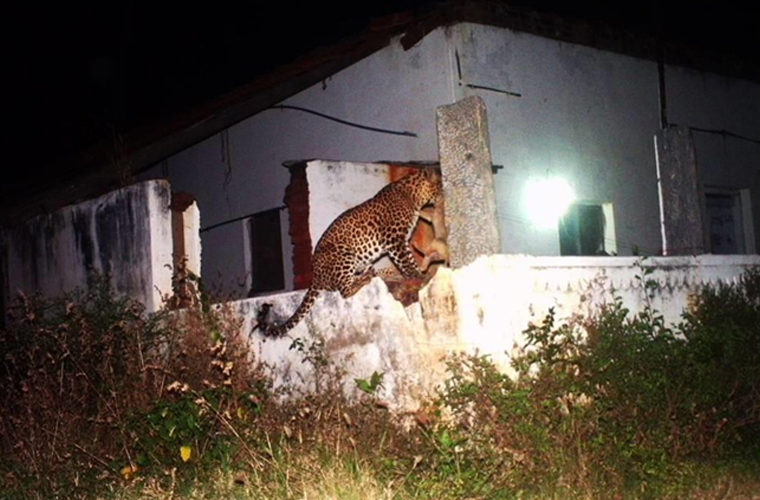Trending Now
- IPL 2024 begins with a bang. First contest between CSK and RCB.
- Election commission allots mike symbol to Naam Thamizhar Katchi
- AIADMK promises to urge for AIIMS in Coimbatore, in its election manifesto.
- Ponmudi becomes higher education minister.
Coimbatore
Scientific management and mitigation efforts needed to avoid human-leopard conflict – Expert
![]() November 20, 2016
November 20, 2016
“Human-leopard conflict is on the rise across India; it is a sensitive socio-political issue and has to be addressed by a holistic approach by the Forest, Police and Revenue departments. Scientific management and mitigation efforts are the need of the hour,” said Dr Prayag, Senior research scholar at Karnataka Veterinary, Animal and Fisheries Sciences University (KVAFSU) Banagalore.
Dr Prayag was engaged in over 35 rescue and rehabilitation operations of leopards from human habitations in Karnataka in the recent years.
Leopards (Panthera pardus), the smallest of the four felines, are increasingly straying into human habitations and attacking humans as they are highly adaptive and choose to live on the fringes of densely populated areas. Lured by easy prey such as domestic dogs and livestock, they visit human habitations after dusk. Leopards often live in sugarcane fields with their cubs. Leopard cubs are found by farmers in Mysore and Mandya when they harvest their fields,” Prayag said.
In Mysore, a policeman was attacked by a leopard which had taken shelter under a culvert. Another leopard which entered a school in Whitefield in Bangalore attacked people before it was tranquilized and caught. The videos of these feline forays into human habitats went viral on social media.
Similarly a tourist was dragged into the forest in the Sathyamangalam Mysore Ghat road section and the half-eaten body of the victim was found later by the rescue team. Similar cases of leopard attacks have been reported from Balapore in Maharashtra and a village in Gujarat.
It is really a daunting task to ensure the peaceful coexistence of leopards where human numbers exceed 200 per sq.kms. Increasing urbanization, deforestation and disappearance of forests lands and buffer zones are some of the causes of this conflict. Yes, the healthy population of the feline species thanks to measures adopted after the Wildlife Protection Act 1972 came into effect is also cited as a reason for increasing human-leopard conflict across India.
When leopards are caged and caught, different protocols are being followed. If the trapped animal is found to be injury-free and healthy it is released back into the forest. If the animal is injured and without canines, it is sent to a rehabilitation centre, one of which is Mysore zoo,” Prayag said.
In Tamil Nadu, human-leopard conflict is reported in Nilgiris district and it is not a menace in Coimbatore, where human-elephant conflict is more common.
“When I was DFO in the Nilgiris, three such cases of leopard conflict were reported. Sathyamangalam Tiger Reserve (STR) and Mudumalai Tiger Reserve (MTC) have a healthy leopard population but the conflict situation is better compared to Karnataka,” said S Ramasubramaniam, DFO, Coimbatore.
Leopards live side by side with tigers but avoid and confrontation. The animals are often driven out of the core areas by tigers, which are highly territorial animals. So they stray out and look for an easy meal in human habitations.
While the number of tigers has shrunk, leopards which have endemicity across India do thrive in numbers. They live from the sub-alpine Himalayas to the Western Ghats and the East – West region. Kashmir Valley and the deserts of Rajasthan are the only places which are leopard-free.























